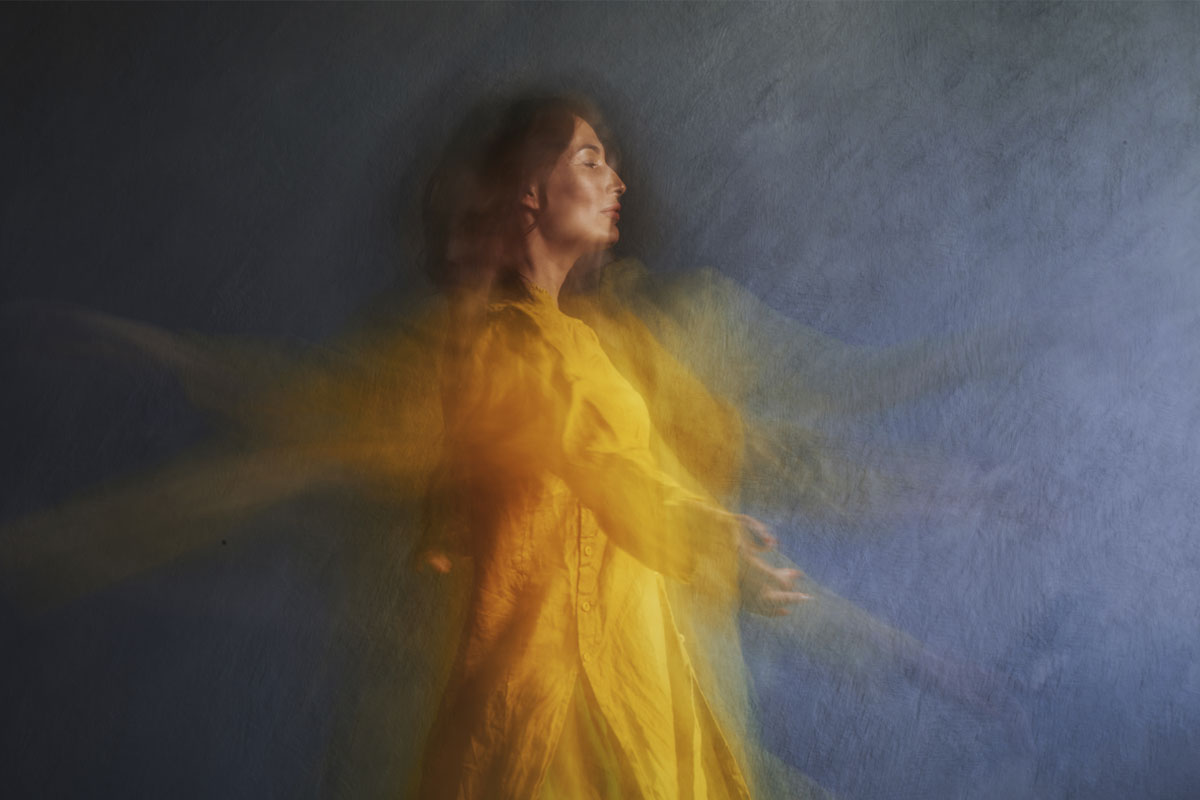My sister and cousins (who lived next door) became b’nei mitzvah at age 13. They participated in Friday night ceremonies that were followed, later in the weekend, by celebrations of varying degrees of lavishness. I watched in awe of their accomplishments and in anticipation of my own future ceremony and party. Being the youngest of the five cousins, I was accustomed to waiting my turn. I didn’t know that I’d be waiting an additional 43 years to become a bat mitzvah myself.
I attended Sunday school and then Hebrew school at our small temple in Queens, New York. I was fascinated by the stories of Noah and the Tower of Babel. I loved printing words in my machberet (notebook) and, admittedly, snacking on the licorice twists and button candy my friends and I would purchase on our after-school walk to temple.
I enjoyed celebrating the holidays, especially the joyous ones. I paraded around the temple sanctuary with a flag on Simchat Torah; I ate a picnic dinner with my family in a decorated sukkah on Sukkot; and I attended the yearly Purim carnival where, blindfolded and at the mercy of a teenage guide, I tried to hide my fear of the cold hard-boiled eggs and spaghetti that were supposed to represent Haman’s eyes and intestines. The prune-filled hamantaschen served in the social hall made the whole experience more palatable.
I was not a brave child, but the scariness of Haman’s “kishkes” was finite, not unlike the short spell of dizziness my friends and I would experience after twirling around on the carpet until we fell to the floor. My fear of Mr. C was different.
Mr. C taught me at Sunday school as well as at Hebrew school on Tuesday and Thursday afternoons. He seemed to take pleasure in embarrassing me. He would make me stop and wait at the front of the room whenever I was late to Sunday school. As my more punctual classmates sat at their desk-chair combinations, their books of Bible stories open to the correct page, Mr. C would lecture me on the importance of being on time. As if he thought I drove my own car to temple rather than being at the mercy of my parents, who had stayed out late on Saturday night! Even though I was always prompt on weekdays, he loved to bring up the Sunday tardiness, or the time I had forgotten to bring back a book to the temple library.
I’d often cry at home and not want to go to Hebrew school for fear of Mr. C. I wondered why the other children were not frightened of him and was shocked when, one Valentine’s day, two of the girls in my class walked up to his desk with big, glittery cards.
“We made these ourselves,” they told him, when they noticed the smile on his face.
Looking back, flattering the teacher was probably an excellent strategy; maybe the girls thought he wouldn’t shame them when it was their turn to make a mistake.
I begged my parents to let me quit Hebrew school, and listened on the extension upstairs when my mother made the call to Mr. C from the telephone in the kitchen to tell him. He expressed surprise that I was unhappy, and told my mother that I was “very smart” and that he was recommending that I skip a grade (“Aleph to Gimmel” is what I remember him saying). My mother still allowed me to drop out.
Why did I allow Mr. C to have such a negative impact on my Jewish education? He probably criticized and embarrassed other children in the classes he taught. It was I, always (and still) so self-conscious and uncomfortable with negative attention, who couldn’t handle the situation. Yet I never quit anything before or after my first stint at Hebrew school.
In the following decades my connection to Judaism remained strong. Every time I read the notice in my temple’s newsletter advertising Hebrew school for adults, I’d say, “next year.” Then I lost my beloved mother. The temple’s rabbi and cantor were of tremendous comfort to me, leading her funeral service, prayers in my home during the shiva and a temple bereavement group, which helped me process her death. The experience connected me more deeply to Judaism and I decided that “next year” was, in fact, this year.
I restarted my Hebrew education at the temple that my husband and I had belonged to for decades. This second chance at Hebrew school was totally different from my first. We were peers now – the five women who had made this commitment (all of whom were younger than me, but still long past age 13) and the two teachers who guided us through it. We sat around a table together after our own workdays, not in chairs facing a lecturing teacher. My classmates and I were not rivals; we were on this journey together. We met not only at temple, but also in one another’s homes as we learned our prayers and wrote our individual speeches. Even planning the kiddush afterward was a group effort.
The classes were challenging, but I did relearn Hebrew and I was proud to lead a service with my four classmates. My husband and children were proud of my accomplishment, too. In a full-circle moment, they each came up to the bimah for an aliyah, along with my 86-year-old father. My daughter had helped me choose the perfect dress: a silky, yellow one adorned with little beads. The beads fell off, but I had my moment. It was worth waiting for.








